
François Auguste René Rodin was a French sculptor generally considered the founder of modern sculpture. He was schooled traditionally and took a craftsman-like approach to his work. Rodin possessed a unique ability to model a complex, turbulent, and deeply pocketed surface in clay. He is known for such sculptures as The Thinker, Monument to Balzac, The Kiss, The Burghers of Calais, and The Gates of Hell.

Gerard Manley Hopkins was an English poet and Jesuit priest, whose posthumous fame places him among leading English poets. His prosody – notably his concept of sprung rhythm – established him as an innovator, as did his praise of God through vivid use of imagery and nature. Only after his death did Robert Bridges publish a few of Hopkins's mature poems in anthologies, hoping to prepare for wider acceptance of his style. By 1930 Hopkins's work was seen as one of the most original literary advances of his century. It intrigued such leading 20th-century poets as T. S. Eliot, Dylan Thomas, W. H. Auden, Stephen Spender and Cecil Day-Lewis.
Andrew M. Greeley was an American Catholic priest, sociologist, journalist and popular novelist.

Ramakrishna Paramahansa, also spelled Ramakrishna Paramahamsa, born Ramakrishna Chattopadhay was an Indian Hindu mystic. A devotee of the goddess Kali, Ramakrishna after adhering to various religious practices from the Hindu traditions of Vaishnavism, Tantric Shaktism, and Advaita Vedanta, as well as from Islam and Christianity, proclaimed that various world religions are "so many paths to reach one and the same goal", thus validating the essential unity of religions. His parable-based teachings espoused the ultimate unity of diverse religions as being means to enable the realization of the same God. He is regarded by his followers as an avatar or divine incarnation of God.
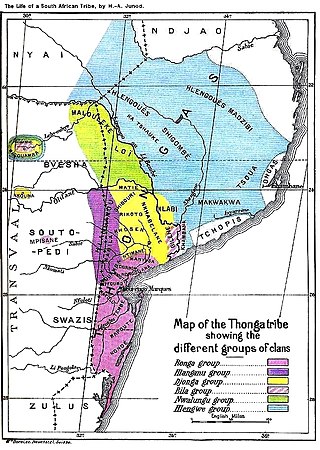
The Tsonga people are a Bantu ethnic group primarily native to Southern Mozambique and South Africa. They speak Xitsonga, a Southern Bantu language. A very small number of Tsonga people are also found in Zimbabwe and Northern Eswatini. The Tsonga people of South Africa share some history with the Tsonga people of Southern Mozambique, and have similar cultural practices, but differ in the dialects spoken.
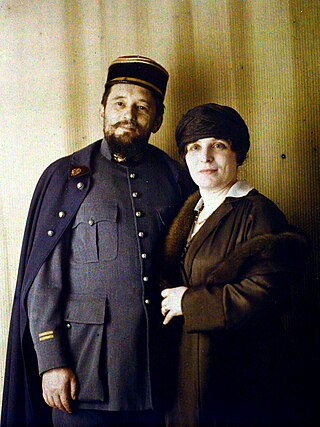
Paul-Louis Couchoud was a French philosopher, a graduate from the prestigious École Normale Supérieure in Paris, a physician, a man of letters, and a poet. He became well known as an adapter of Japanese haiku into French, an editor of Reviews, a translator, and a writer promoting the German thesis of the non-historicity of Jesus Christ.

The Ecstasy of Saint Teresa is a sculptural group in white marble set in an elevated aedicule in the Cornaro Chapel of the church of Santa Maria della Vittoria in Rome. It was designed and completed by Gian Lorenzo Bernini, the leading sculptor of his day, who also designed the setting of the Chapel in marble, stucco and paint. It is generally considered to be one of the sculptural masterpieces of the High Roman Baroque. The sculpture depicts Teresa of Ávila, a Spanish Carmelite nun and saint, swooning in a state of religious ecstasy, while an angel holding a spear stands over her.

Aleksei Fyodorovich Losev was a Soviet and Russian philosopher, philologist and culturologist, one of the most prominent figures in Russian philosophical and religious thought of the 20th century.
United States v. Ballard, 322 U.S. 78 (1944), was a United States Supreme Court case from the October 1943 term.
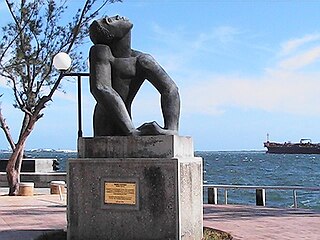
Edna Swithenbank Manley, OM is considered one of the most important artists and arts educators in Jamaica. She was known primarily as a sculptor although her oeuvre included significant drawings and paintings. Her work forms an important part of the National Gallery of Jamaica's permanent collection and can be viewed in other public institutions in Jamaica such as Bustamante Children's Hospital, the University of the West Indies, and the Kingston Parish Church.
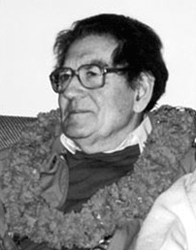
Victor Henry Anderson was an American priest and poet. He was co-founder of the Feri Tradition, a modern Pagan new religious movement established in California during the 1960s. Much of his poetry was religious in nature, being devoted to Feri deities.
The religious beliefs of Adolf Hitler, dictator of Nazi Germany from 1933 to 1945, have been a matter of debate. His opinions regarding religious matters changed considerably over time. During the beginning of his political life, Hitler publicly expressed favorable opinions towards Christianity, but later totally rejected it. Most historians describe his later posture as adversarial to organized Christianity and established Christian denominations. He also criticized atheism.

The Roulin Family is a group of portrait paintings Vincent van Gogh executed in Arles in 1888 and 1889 of Joseph, his wife Augustine and their three children: Armand, Camille and Marcelle. This series is unique in many ways. Although Van Gogh loved to paint portraits, it was difficult for financial and other reasons for him to find models. So, finding an entire family that agreed to sit for paintings — in fact, for several sittings each — was a bounty.
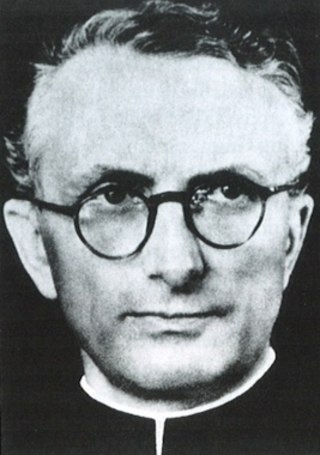
Alois Grimm was a Jesuit priest, Patristic scholar, educator, and victim of Nazi religious hostility.
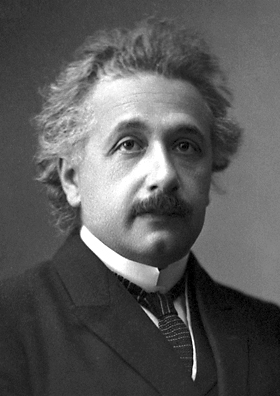
Albert Einstein's religious views have been widely studied and often misunderstood. Albert Einstein stated "I believe in Spinoza's God". He did not believe in a personal God who concerns himself with fates and actions of human beings, a view which he described as naïve. He clarified however that, "I am not an atheist", preferring to call himself an agnostic, or a "religious nonbeliever." In other interviews, he stated that he thought that there is a "lawgiver" who sets the laws of the universe. Einstein also stated he did not believe in life after death, adding "one life is enough for me." He was closely involved in his lifetime with several humanist groups. Einstein rejected a conflict between science and religion, and held that cosmic religion was necessary for science.

George Phoenix (1863–1935) was a British (Victorian/Edwardian) landscape, figurative and portrait artist and sculptor. He regularly exhibited his works in his native Wolverhampton and nationally. They are represented at Wolverhampton Art Gallery and other galleries of the Midlands, and at the National Portrait Gallery.

Vincent van Gogh enjoyed making Paintings of Children. He once said that it's the only thing that "excites me to the depths of my soul, and which makes me feel the infinite more than anything else." Painting children, in particular represented rebirth and the infinite. Over his career Van Gogh did not make many paintings of children, but those he completed were special to him. During the ten years of Van Gogh's career as a painter, from 1881 to 1890, his work changed and grew richer, particularly in how he used color and techniques symbolically or evocatively.

Mallica Reynolds, OD, better known by the adopted name "Kapo", was a Jamaican artist and religious leader. Considered one of the greatest artists in Jamaica's "Intuitives" artistic movement, Kapo's religious beliefs were reflected in his work.
Pierrot Barra (1942–1999) was a Haitian Vodou artist and priest, who was president of a Bizango society. He was well-known for his use of diverse materials to create “Vodou Things,” which functioned as charms or altars for the Vodou religion.














